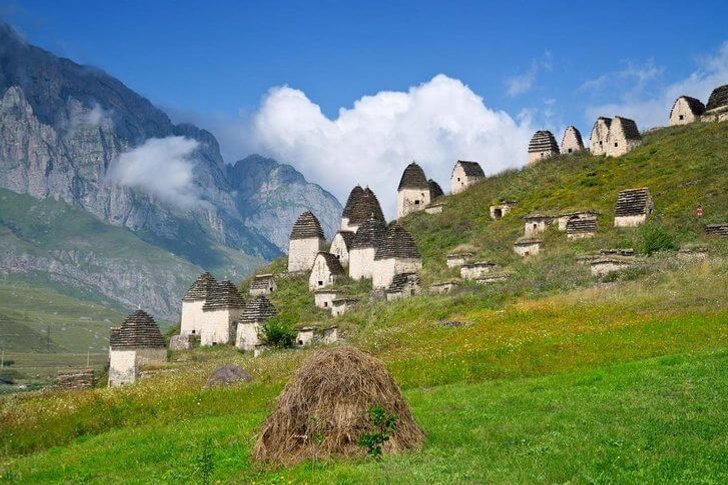The capital of North Ossetia - the city of Vladikavkaz - is a real cultural center of the region. It is located on both banks of the Terek and offers picturesque views of the nearby hills, including Mount Stolovaya. Local residents have repeatedly stood up for the iconic objects of the city in troubled periods of history. Thanks to their courage, monuments of architecture and history have been preserved here. First of all, this concerns religious buildings, such as the Church of the Nativity of the Blessed Virgin Mary.
Of the unusual sights associated with Vladikavkaz, it is worth noting the "City of the Dead". Almost 100 ancient crypts near the village of Dargavs can tell a lot about the customs and past of the Ossetian people. Everything is interesting in them: from the content to the features of the structure.
What to see and where to go in Vladikavkaz?
The most interesting and beautiful places for walking. Photos and a short description.
- Mosque of Mukhtarov
- Peace Avenue
- Park named after Kosta Khetagurov
- Art Museum named after M. S. Tuganov
- National Museum of North Ossetia-Alania
- Opera and Ballet Theatre
- Russian Theater named after E. Vakhtangov
- Monument-fountain Nart Soslan
- St. George's Cathedral
- Church of the Nativity of the Blessed Virgin Mary
- Church of St. Gregory the Illuminator
- Monument to Issa Pliev
- Terek river
- Mount Canteen
- City of the Dead (Dargavs)
Mosque of Mukhtarov
Construction lasted for eight years and was completed in 1908. The name was received in honor of the philanthropist who invested the most in the project. After the revolution, soldiers began to protect the mosque from destruction. It was also saved thanks to the status of an architectural monument. For some time, the exposition of the Republican Museum of Local Lore was located inside. Now the mosque with two minarets is again accepting parishioners.
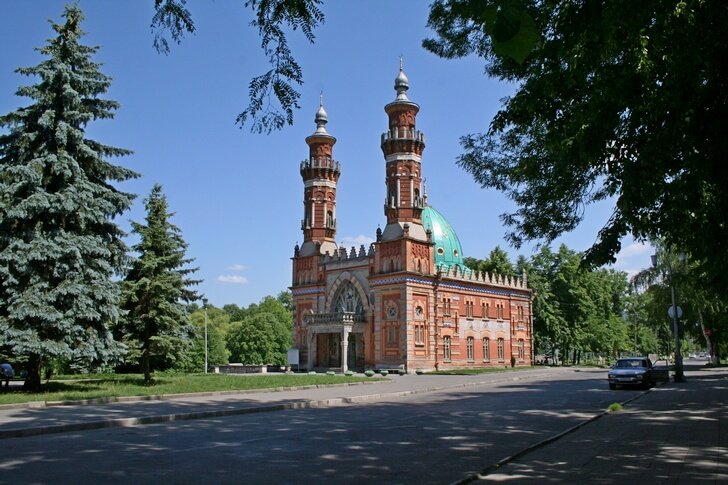
Peace Avenue
It stretches from Freedom Square to Kirov Street. This is the historical and cultural part of the city. Appeared in the XIX century, repeatedly changed names, including after the visit of the emperor, became known as Alexander. Close to the avenue adjoins the park of culture and recreation. There are also art and national museums. The pedestrian boulevard of the prospect has a length of one verst or 1066.8 meters.

Park named after Kosta Khetagurov
Spread out on the right bank of the Terek. It is limited by the Kirov and Chugunny bridges. Named after the poet and playwright who stood at the origins of Ossetian literature. The period of foundation is considered to be 1830. In addition to the green walking area and ponds with swans, the park can offer guests some types of leisure activities. There is a restaurant, sports grounds, including mini-golf, as well as a historical monument - the mansion of Baron Steingel.

Art Museum named after M. S. Tuganov
Exists since 1939. Named after the painter who studied with Repin and stood at the origins of contemporary art in Ossetia. The collection includes works by local artists from different periods. Thanks to this, one can trace the stages of the formation of Ossetian art. The exposition is housed in a building - an architectural monument built in 1903. Concerts are held at the museum, for which a separate hall is allocated.
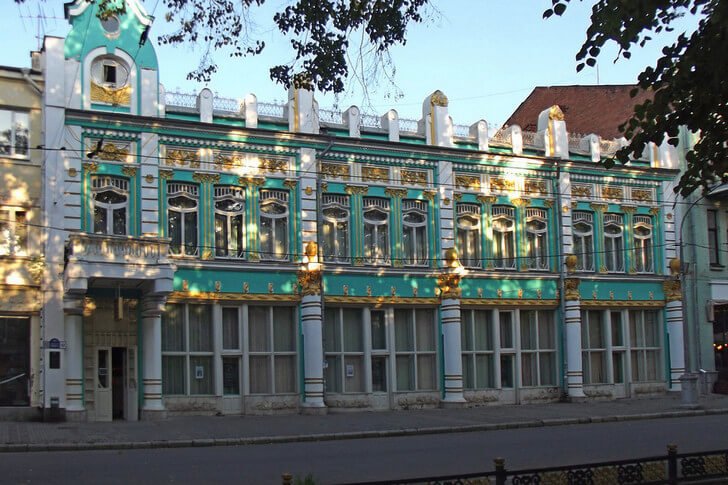
National Museum of North Ossetia-Alania
A wave of interest in archeology led to the formation of a permanent exhibition consisting of finds within the region in 1893. The formed museum was the first in the southern part of the country. For a long time, starting from the 80s of the last century, the building was under reconstruction. The reopening took place in 2017. Excavations of burial mounds and burial grounds allowed to accumulate impressive funds. Exhibits made of gold are especially valuable.
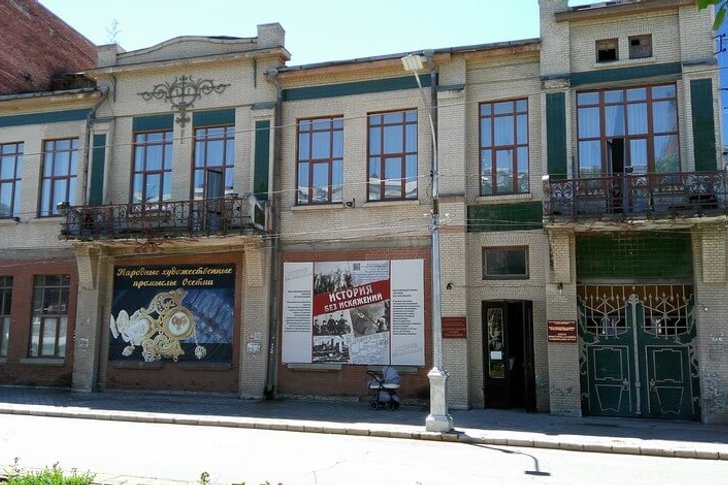
Opera and Ballet Theatre
The musical theater appeared in Vladikavkaz in 1958. Each season, the repertoire is replenished with novelties, but there are also performances that have been going on for years. Artistic director - L. Gergieva. The theater has occupied a building built in the Stalinist Empire style since its foundation. The auditorium has a capacity of 680 seats. Since 2005, the theater has been hosting a festival of musical art, where groups from all over the country come.
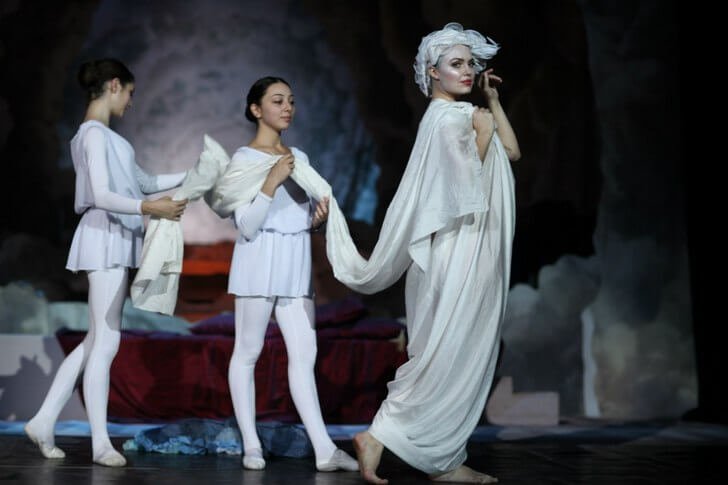
Russian Theater named after E. Vakhtangov
The oldest drama theater in the region. Year of foundation - 1869. The building was completed by 1971. The theater is associated with the names of cultural figures known in the country and abroad. For example, Bulgakov was in charge of the local literary department, and Vakhtangov began his career as a director. In honor of Yevgeny Bagrationovich, the theater has been called since 1996. There are two scenes: large and small.
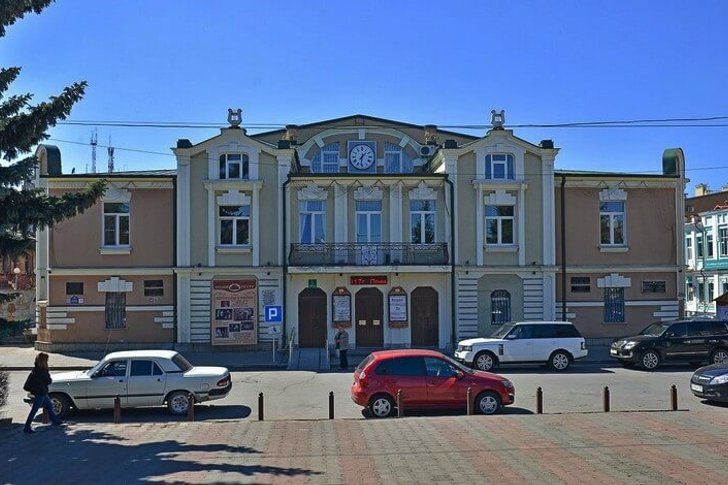
Monument-fountain "Nart Soslan"
Installed in 2011 on the central square of the city. The fountain is dedicated to the character of national epics and legends. Various miraculous characteristics are attributed to Soslan. For example, he was allegedly born from a stone, and the invulnerability of the hero was given by bathing in wolf's milk. The hero, as it were, is dancing over a bowl on a dais. According to legend, the bowl of Nartamonga itself can distinguish between lies and truth. Therefore, during the feast, she waters and heals honest warriors.

St. George's Cathedral
Construction started in 1996 and completed in 2002. In the past, there was a cemetery on this territory. The Russian-Byzantine architectural style was chosen as the basis. The bell tower is part of the composition and stands close to the five-domed temple. The main relic is an ark with a particle of the relics of St. George the Victorious - the patron saint of the temple. The cathedral has the status of a cathedral. It has Sunday and Orthodox schools.
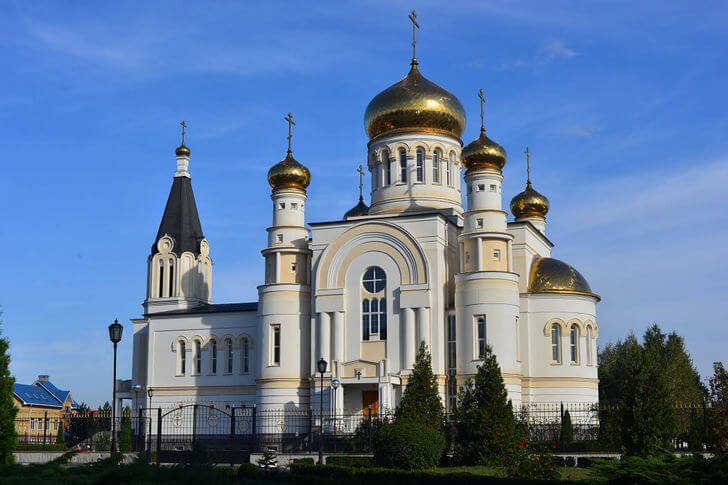
Church of the Nativity of the Blessed Virgin Mary
The oldest Orthodox church in the city. It begins its history in 1815, when it was made of wood. 10 years later, a stone building appeared. The location on the Ossetian hill gave the temple a popular name - "Ossetian". The flock managed to save the church from destruction in the 30s. At first it was closed, and then identified as a museum. At the moment, the Russian Orthodox Church has returned, there are shrines, for example, the “Mozdok” icon.
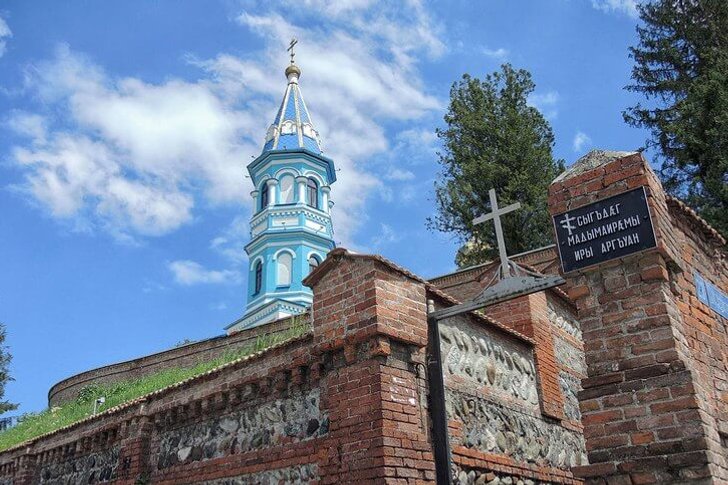
Church of St. Gregory the Illuminator
Refers to the Armenian Apostolic Church. Construction was completed in 1868. It is located on the banks of the Terek not far from the Cast Iron Bridge. Opposite is the Vakhtangovs' house. In 2010, a khachkar appeared in the yard. Its installation was timed to coincide with the 95th anniversary of the Armenian genocide. Representatives of other faiths were invited to the solemn ceremony. It has the status of a cultural heritage site.
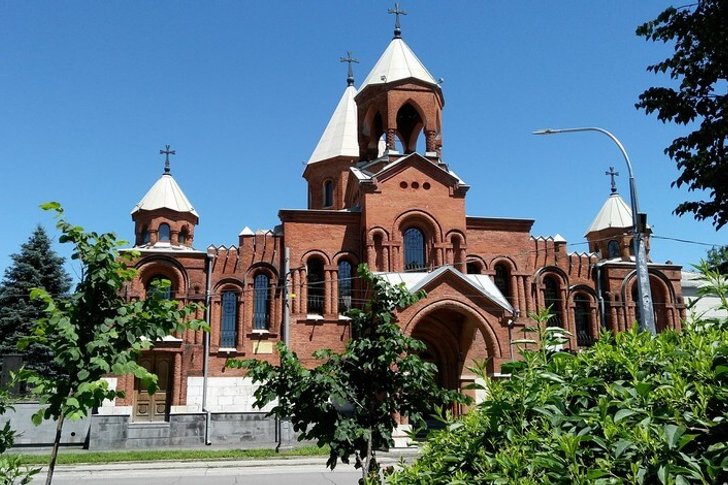
Monument to Issa Pliev
It is located on the square named after the commander, twice Hero of the USSR Issa Pliev. The sculpture by B. Totiev and N. Khodov was installed in 1997. The commander is depicted in full dress as a stately hero with impeccable bearing and riding a horse. The horse under him seems to be rushing up. So the authors wanted to convey the determination and fearlessness of Pliev, who was not used to giving in to difficulties during his lifetime.
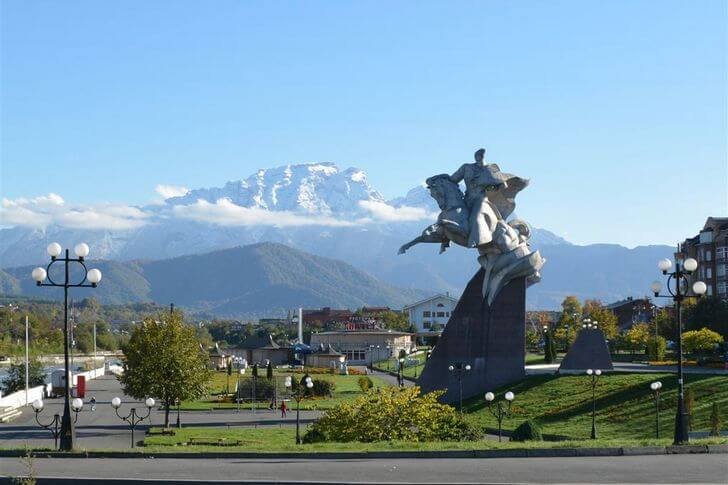
Terek river
The name from Karachay-Balkar is translated as "rapid water". It flows through the territory of several regions of Russia and Georgia. The length is about 623 km. It is of great economic importance for Vladikavkaz. There are many fish in the lower reaches, including valuable commercial species such as trout and pike perch. Tourist and sports rafting is carried out: there are both rapids and calm areas.

Mount Canteen
It is part of the Caucasus mountain system. The absolute height is about 3 thousand meters. The summit is clearly visible from many points in the city. Climbing groups are organized in nearby settlements. There are marked hiking trails. Local legends give the hill a role similar to the Greek Olympus. From here a number of legends and myths appeared. The image of the mountain is applied to the coat of arms of Vladikavkaz.
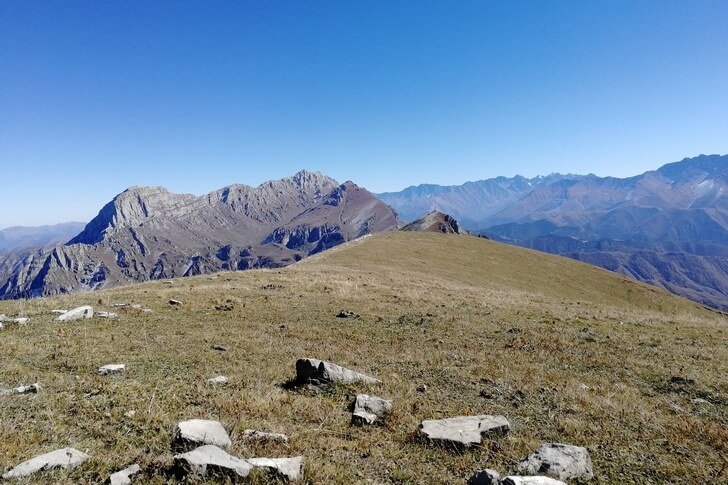
"City of the Dead" (Dargavs)
The monument of culture and history of the 18th century is located near the village of Dargavs. On the territory of the "City of the Dead" stone crypts were built. There are about a hundred of them. The territory is important for the study of the customs of the Ossetian people. According to the traditions of the ancestors, people were buried in national clothes along with small household items and valuables. The features of the masonry and roofing of the crypts are also subject to study.
